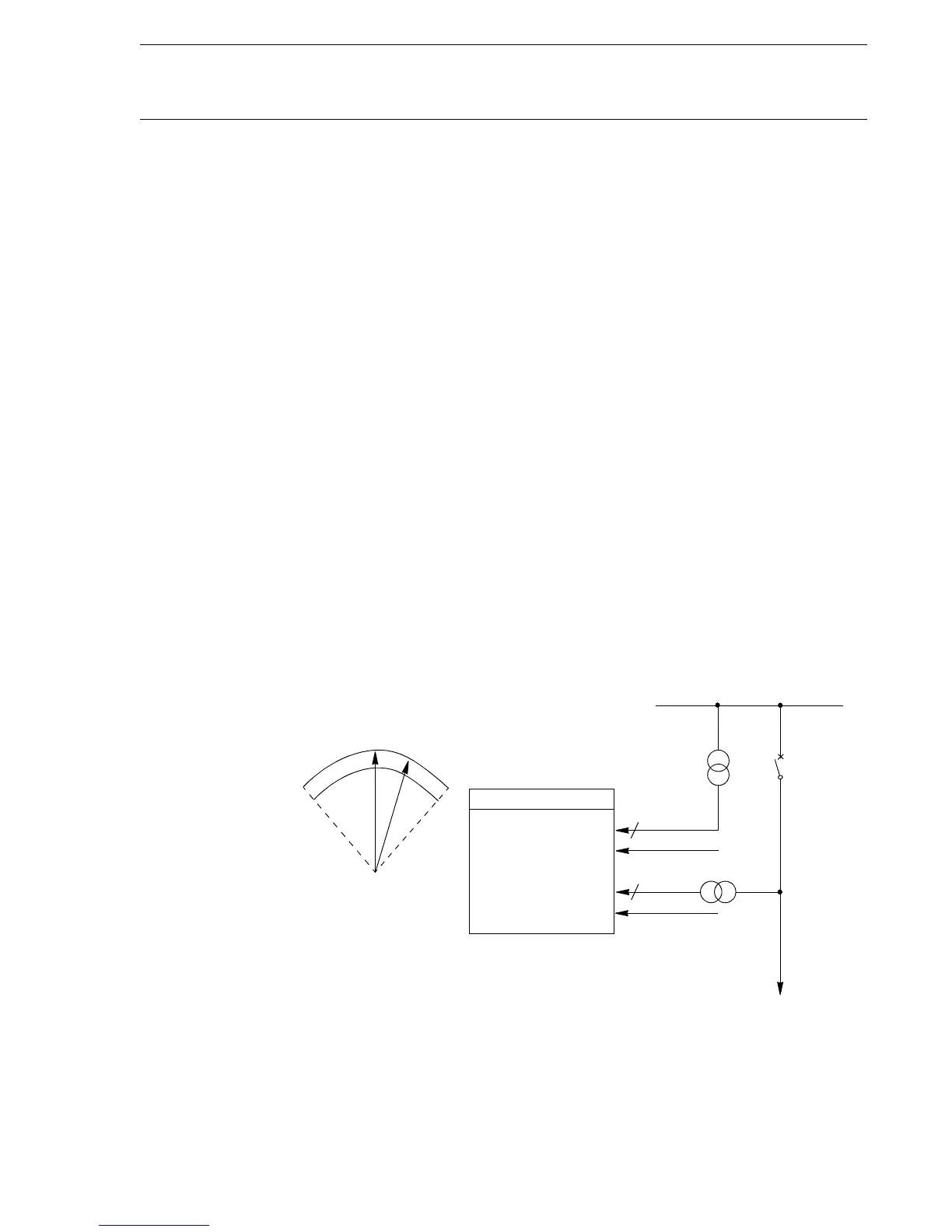ABB Network Partner AB
- 9Page
Function:
1 Application
1.1 Synchronism check The synchro-check function is used for controlled closing of a circuit in an
interconnected network. When used, the function gives an enable signal at
satisfied voltage conditions across the breaker to be closed. When there is a
parallel circuit established, the frequency is normally the same at the two
sides of the open breaker. At power swings, e.g. after a line fault, an oscil-
lating difference can appear. Across the open breaker, there can be a phase
angle and a voltage amplitude difference due to voltage drop across the par-
allel circuit or circuits. The synchro-check function measures the difference
between the U-line and the U-bus, regarding voltage (UDiff), phase angle
(PhaseDiff), and frequency (FreqDiff). It operates and permits closing of
the circuit breaker when these conditions are simultaneously fulfilled.
• The voltages U-line and U-bus are higher than the set value for
UHigh of the rated voltage U
r
/sqr3.
• The differences in the voltage and phase angles are smaller than the
set values of UDiff and PhaseDiff.
• The difference in frequency is less than the set value of FreqDiff.
The bus frequency must also be within a range of ±5 Hz from the
rated frequency.
The function can be used as a condition to be fulfilled before the breaker
is closed at manual closing and/or together with the auto-recloser func-
tion.
Fig. 1 Synchronism check
SYN 1
UHigh>70-100% Ur
UDiff<5-50% Ur
PhaseDiff<5-75
o
FreqDiff<50-300mHz
Fuse fail
Fuse fail
U-Line
Line
reference
voltage
(X80152-1)
U-Line
U-Bus
5
Synchronism and energizing
check for single circuit breaker
with voltage selection
1MRK 580 152-XEN
Version 1.0-00
October 1996
Optional

